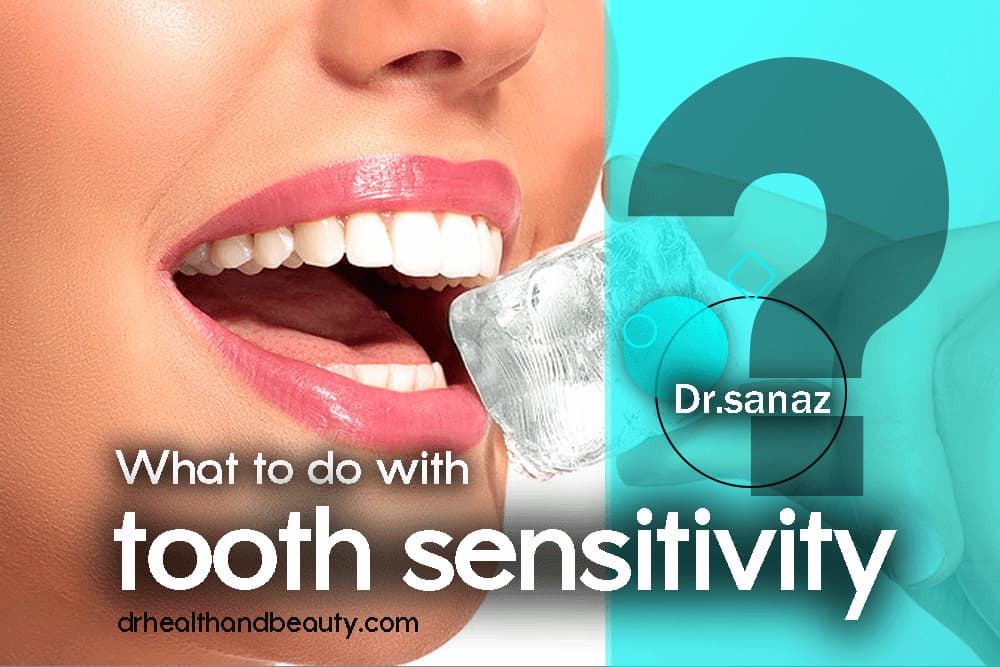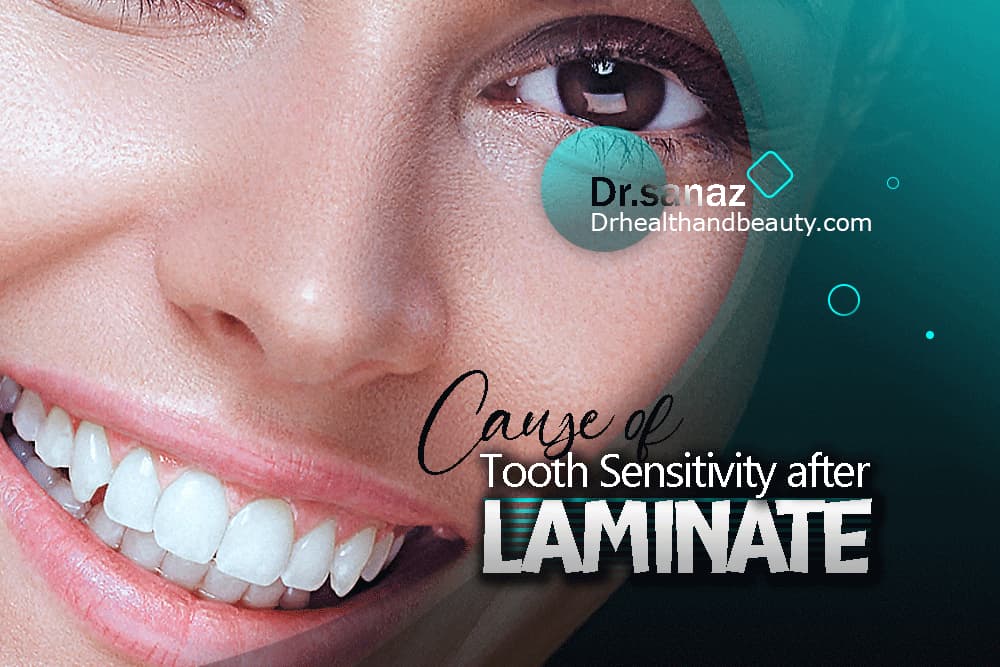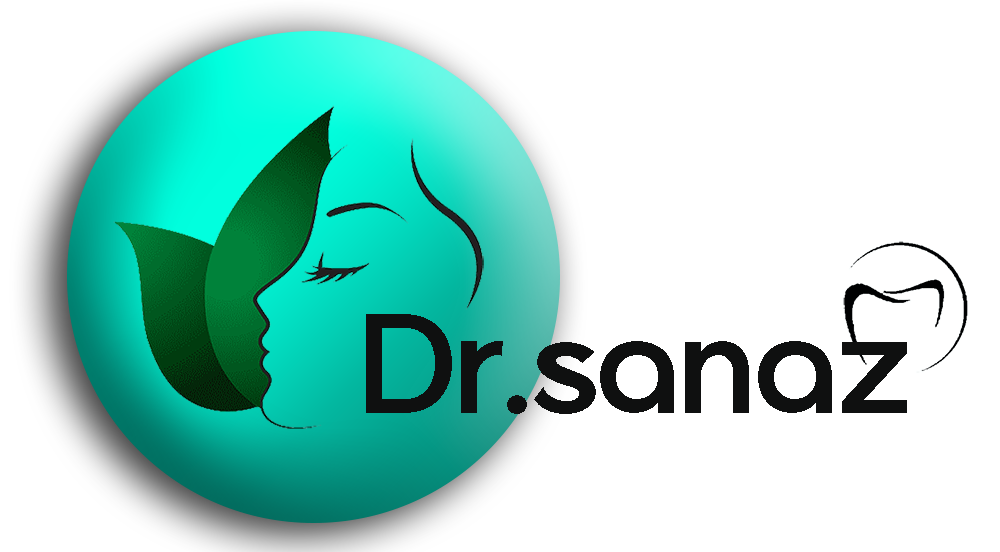

What Is The Cause Of Tooth Sensitivity After Laminate?
The content of this article is approved by “drhealthandbeauty” experts.
Note: This article is only to guide and increase your knowledge. Before taking any action, you can consult “drhealthandbeauty” doctors or your doctor for treatment.
Many people seek cosmetic dental treatment using dental lamination. Laminations are known as an effective solution to cover the visible defects of the teeth. This method usually covers discoloration, lip filling, wear, or minor misalignment in teeth. This can also be a convenient and practical solution for people who have yellow teeth while brushing them every day.
After installing dental laminates, some people may experience tooth sensitivity to cold and hot foods.
Tooth sensitivity is discomfort when consuming hot and cold foods and drinks. Even sweet or spicy tastes may increase tooth sensitivity. Whatever the cause, this sensitivity usually occurs shortly after the laminate is installed. Still, fortunately, it usually disappears after a week.
When installing dental veneers, a part of the tooth enamel is cut to prevent the veneers from looking bad. This shaving may cause temporary teeth sensitivity to cold and hot foods. However, the value of having a beautiful smile can make this temporary sensitivity tolerable.
Table of Contents

What are the causes of tooth sensitivity after lamination of teeth?
Tooth sensitivity after laminate can have various reasons. Loss of tooth enamel and improper placement on the teeth can cause this. The important thing is that the pain is temporary and can usually be limited with mild pain medication and other precautions.
Loss of tooth enamel
As you know, laminate coating is one of the dental beauty services that requires the removal of tooth enamel.
The first and most prominent cause of tooth sensitivity after lamination is the loss of tooth enamel. Before placing your laminate veneer, the dentist will shave about 0.5mm of enamel to flush the cap with the rest of the teeth.
This can cause short-term sensitivity as the underlying nerve is compressed. After the initial sensitivity wears off, you may still experience some degree of sensitivity to cold or heat because there is less enamel covering the dental nerves.
Improper bite of teeth
Improper bite is another leading cause of tooth sensitivity after laminate. After receiving the veneers, most patients take a few days to adjust their bite. Improper biting can lead to irritation and increased sensitivity, but this problem usually corrects itself after a few days.
When people have trouble adjusting their bite, they can talk to their dentist. Dentists may be able to fix the problem with just a few minor adjustments.
Duration of sensitivity after dental lamination
For most patients, the sensitivity and problems with the origin of the laminate, for whatever reason, will decrease within one to two weeks. However, in sporadic cases, it is possible for patients to experience long-term problems with laminate veneers.
It is better to watch out for the following symptoms and inform your dentist if you see them:
Pain or tenderness that lasts more than two weeks.
If the pain and sensitivity caused by veneer placement lasts more than two weeks, it can be a sign of a more severe problem. For example, the tooth under the veneer may have decay or a cavity.
Related: “Which Treatment Is Best For A Tooth Cavity?
Unexplained toothache under the composite
If the tooth under the composite hurts for no reason and you also have symptoms of sensitivity, it may be a sign of decay.
Loosening of composite veneer
In some cases, tooth sensitivity appears along with loosening of the veneer, which must be checked by a dentist.
Unaligned veneers
If you feel that the laminate veneer is not aligned well and you cannot place the teeth on top of each other as before, visit the dentist to correct it. This problem is usually associated with tooth sensitivity.
Composite cracking
If you notice cracks on the laminate veneer at the same time as tooth sensitivity, you must visit your dentist for an examination.
If the mentioned symptoms continue and do not subside, you need to talk to your dentist immediately.

Why is tooth sensitivity not resolved after laminate?
This is a challenging question that many clients face, unfortunately, and they have to look for the root in the conditions of their teeth and the center that performed the laminate.
When the specialist molds and makes a laminate, he must carefully check the condition of the teeth so that there is no damage or decay in them.
The presence of a damaged and decayed tooth, even if it is a small amount and lack of accuracy in the examinations, causes this decayed and infected tooth to suffer more damage after laminate, but because it is not visible, it only transmits pain and sensitivity to the person.
The second reason is the amount of sharpening that is done for the teeth before laminate. Sometimes, due to the misalignment of the teeth or the lack of expertise and ability of the dentist, the amount of tooth shaving becomes more than the specified limit and causes tooth enamel to be lost.
In this case, upon contact with the most minor hot or cold substance, the tooth will react, and the person will feel pain.
The third reason is a lack of oral hygiene. After laminate, the level of hygiene should be much higher than before the treatment because the edges of the laminate are an excellent place to get scale. Also, the space between the laminate veneer and the tooth, which is filled with glue, changes color over time and becomes cloudy.
This clogging of mass causes tooth decay and damage and, as a result, causes infection and sensitivity.
The following reason for eating very hot or iced food and drinks in the first days after lamination: if you do not observe in the first few days and use very hot or icy food and beverages, the shaved tooth will unconsciously show more sensitivity and damage.
To see, Therefore, in the first week after laminate, lukewarm drinks and foods should be used.
In some cases, not installing the laminate correctly on the teeth and its deviation also causes problems and sensitivities.
These reasons cause tooth sensitivity to be high after laminate.
How is long-term sensitivity treated after composite?
If this sensitivity increases over time, it is necessary to go to the dentist’s office to check the cause and treat it. Some of the treatment methods that are performed according to the cause of the problem include the following:
Treatment of gum and tooth problems
If the dentist did not check the oral health properly before the restoration by installing a composite on a decayed tooth or with gum problems, it can be the cause of dental pain and long-term sensitivity.
Related: “How Do I Know What Kind Of Toothache I Have?“
In this situation, the composite is removed from the tooth, and after the restoration and necessary treatments, a new composite will be installed on that tooth.
Composite Polishing
If the sensitivity is caused by improper installation or proper polishing of the composite, the dentist will solve these problems by taking the necessary measures.
What can be done to prevent tooth sensitivity after lamination?
The first and most crucial step is to refer to the best specialist to do laminate. When the specialist has the experience, ability, and proper equipment, he prepares the teeth for bonding the laminate with the least amount of grinding and prevents the loss of tooth enamel.
In this condition, the teeth will no longer be sensitive to hot and cold temperatures, and if there is a small amount of sensitivity, it will be resolved in the first week.
The second case is the complete treatment and restoration of all teeth before laminate. When you apply for laminate, a professional specialist will not ignore the most minor problems in the teeth and will prescribe a complete treatment.
The third measure is not to consume very hot or icy foods and drinks in the first few days after laminate, which causes increased sensitivity and damage to the teeth.
The fourth is the use of hypoallergenic toothpaste. These toothpastes solve the problem of local pain caused by tooth sensitivity to a large extent, and the person will feel good. On the other hand, they can help ypu to To Keep Healthy Oral Microbiome.
Related: “Cavity Conundrum? Best Toothpaste To Reverse Cavities“
By observing these things, you can enjoy the laminate treatment and not have any discomfort or regret due to the pain and sensitivity of the laminate treatment.
Frequently asked questions
Is tooth sensitivity normal after lamination?
This short-term complication usually occurs for most people who undergo this procedure and is nothing to worry about. But if it persists for a long time, it may be a sign of another problem.
When should I seriously consider the sensitivity after laminate veneer installation?
If this issue lasts more than two weeks and is accompanied by symptoms such as persistent pain, you should visit the dentist’s office.
Can I take medicine to reduce sensitivity after dental lamination?
Painkillers cannot reduce tooth sensitivity. But if you feel a lot of pain and discomfort, you can use over-the-counter pain relievers. It should be noted that if this period lasts more than a few days (about four days), it is better to inform your dentist.
What foods are effective in reducing sensitivity after laminate installation?
For the first few days, if you have a balanced diet, you will help reduce your sensitivity. Among the valuable foods in this period of time we can mention mashed potatoes, bananas, soft bread, bananas, white rice, eggs, etc.
What foods can increase tooth sensitivity after lamination?
These include very hot or cold foods and drinks, citrus fruits, limes, crunchy foods, spicy and peppery foods, sticky foods, and acidic foods.
Sensitivity after lamination is typical for how many days?
It is usual for this sensitivity to remain for one to two weeks. But if it takes longer than that, it is better to visit a dental clinic.
What toothpaste should I use to reduce sensitivity after lamination?
Use hypoallergenic toothpaste containing potassium nitrate with a suitable toothbrush. It should be noted that after eating and drinking acidic foods and drinks, wait a little before brushing your teeth.
Immediate teeth Brushing after eating acidic foods may make your teeth more sensitive. also it can be one of The Cause Of Tooth Decay Despite Brushing.
Should gum sensitivity to laminate be taken seriously?
In some cases, the sensitivity to laminate materials may be due to a person’s allergic reaction to these materials, or another reason may cause it. Although most of the time, this complication does not indicate a serious problem; you should still discuss the issue with your dentist.

Conclusion
If you are also a candidate for lamination for your teeth, you should know that tooth sensitivity after lamination is one of the natural side effects of this treatment method.
The reason for that can be the amount of teeth sharpening to perform lamination or the improper bite of the teeth. But the most important thing is that you should note that the duration of this complication after tooth lamination should not be extended.
Therefore, if the sensitivity of your teeth lasts for a long time after lamination, you should take it seriously and see a doctor for treatment.

